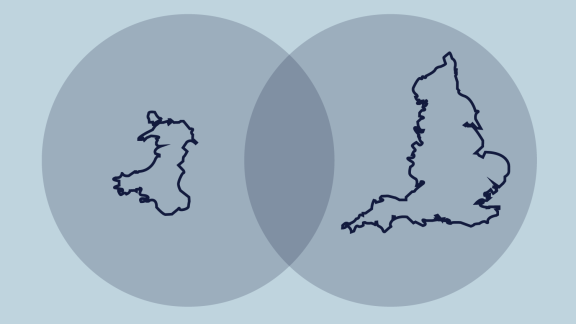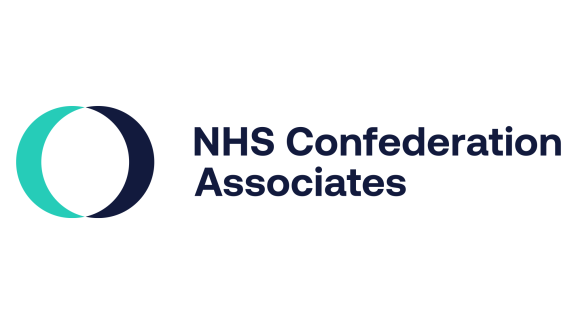Can we make direct comparisons between the NHS in England and Wales?

Overview
Devolution in the UK has led to four different health systems, each taking slightly different approaches to delivering health and care. It’s therefore understandable that people will want to compare performance across the UK, and particularly in Wales where for almost 25 years, the NHS has been run by the Welsh Labour party. This piece demonstrates that the data we have needs to be put into context when making comparisons.
In the lead up to general elections, the NHS is invariably used as a political football to drive forward different parties’ highly charged debates and election campaigns, and comparing the performance of the NHS in England and Wales is a key battleground.
Over the summer of 2023, the former Secretary of State Steve Barclay suggested that England was ‘open to requests’ from patients in the UK’s other nations to be treated in England. This was partly based on there being fewer patients in the long-wait cohorts in England (such as 78 and 104 weeks) than in the devolved nations, and a higher proportion of the population on the waiting lists in Wales.
Meanwhile, Labour politicians accused the former health secretary of playing politics at a time when waiting lists in England are at record levels (having risen to 7.61 million at last estimate) despite the Prime Minister’s pledge in January 2023 that “NHS waiting lists will fall and people will get the care they need more quickly”. Labour also noted that when comparing waiting list rises across 2022 and 2023, the waiting list has risen much more significantly in percentage terms in England than in Wales.
This piece examines the differences in data collected in England and Wales and explores the context behind these differences.
Exploring the evidence
Speaking at the Conservative Party Conference, then Secretary of State Steve Barclay said:
“As a result of [Welsh] Labour’s short-term thinking, patients in Wales are twice as likely to be waiting for treatment than in England.”
“No wonder the number of patients in Wales escaping to seek treatment in England has increased by 40 per cent in two years.”
Taking these statements as an example, we outline six factors that should be considered when comparing data.
Unpacking the comments
Statement 1: "As a result of [Welsh] Labour’s short-term thinking, patients in Wales are twice as likely to be waiting for treatment than in England.”
So, while it’s true that there is a longer waiting list for elective care in Wales as a proportion of the population than in England, ‘twice as likely’ is an exaggeration, coming from data being used out of context.
Statement 2: “No wonder the number of patients in Wales escaping to seek treatment in England has increased by 40 per cent in two years.”
Have patients been ‘escaping’ for treatment?
The second point in this comment by the former Secretary of State is based on a selective use of statistics. The point is based on figures which showed 39,485 Welsh residents were admitted for elective treatment in England compared to 28,405 two years prior, a 39 per cent rise. However, this increase is unsurprising given it uses 2020/21 figures for comparison - the year which saw the onset of COVID-19, multiple lockdowns and the necessity to postpone a considerable proportion of elective treatments. The years following the height of the pandemic would naturally see an increase in activity and demand.
It is worth noting, Wales does not have any major acute hospitals across Powys in mid-Wales, and no major trauma centre in North Wales, so in these areas the nearest place for acute and specialist treatment is in England.
More unaccounted for context: Why might more people be on waiting lists in Wales?
Waiting lists – just one piece of the puzzle
We must remember that elective activity is just one area of health and care service delivery, making up one part of a much bigger system. Primary care, community care, social care, urgent and emergency care are just some areas where both countries will have varying performance measures which do not always easily compare.
Services in England and Wales have other shared challenges such as capacity in social care, integration of services and ensuring communities can be supported to look after their health. Yet there are nuances too and the makeup of the NHS is different at local, regional and national level in both nations, thus service delivery will vary.
The bottom line
The notion that patients in Wales are ‘escaping’ to England due to longer waits was taken out of context when considering the two-way flow of cross-border care between the two nations. From the pandemic period, the general trend of demand and activity was upwards, and activity also significantly increased for patients being treated in Wales who are not residents. Therefore, a baseline of during the pandemic is unhelpful and using data showing flow one way is misleading.
It is true that some metrics suggest the NHS in Wales is struggling compared to England – both overall pathways on the waiting list as a proportion of the population and the number of patients in long-wait cohorts, such as 78 and 104-week waiters, are higher in Wales.
However, the disproportionate effect of the older, less healthy, more deprived population in Wales cannot be underestimated in terms of the impact on the demand on health and care services.
Furthermore, direct comparisons of performance data does not take into account policy priorities (for example, focusing efforts on the longest waiters versus those with greatest clinical need).
Ultimately, data is collected, counted, coded and reported differently between the two nations. Performance measures in each country were also brought in at different times with services likely to be at different stages of rollout. This means performance is not directly comparable and to give as accurate a picture as possible, every effort should be made to examine the context when making comparisons.
Read more from our series of explainers, providing facts and figures to challenge common misconceptions in health and care.



